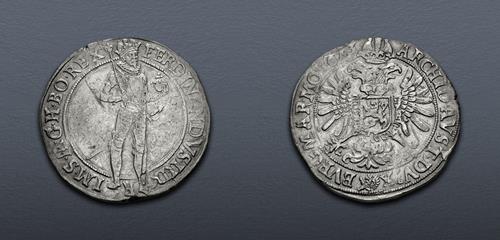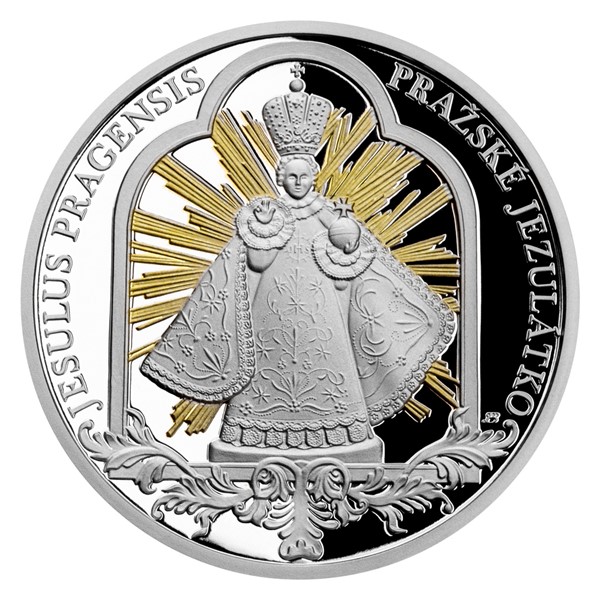Good Reasons On Engraving Czechoslovakia Coins
Wiki Article
How Do High-Precision Cnc Machines Form The Design Into A Die, Or Master Hub That Is Used To Create Gold Medals, Coins, Or Coins?
High-precision CNC (Computer Numerical Control) machines play a crucial role in the creation of dies or master hubs for the creation of gold coins and medals. This is a brief overview of CNC Programming.
The CAD software (Computer Aided Design) is utilized to create an electronic 3D model of a coin or medal design.
The software CAM (Computer Aided Manufacturing) generates instructions and toolpaths for CNC machines by using a 3D model.
Choose the right material for die-cutting
CNC machined of the master hub and die uses durable, high-quality materials, like steel, brass or hardened metals. They are able to withstand the high-pressure striking process, and guarantee accurate replication of the model.
Fixture and Setup
To ensure precision To ensure precision, the material is fixed to the work table of to ensure precision, the material is secured onto the worktable of a CNC machine or vice versa. The correct fixing of the material is essential to avoid the material from moving and vibration during cutting.
CNC Machining Process
CNC machines utilize tools like endmills or ballmills to create designs on the master or die.
The CNC machine takes material off the blocks of blank material in accordance with the 3D specifications.
Different kinds and sizes of cutting tools are used to attain different dimensions, contours, and the details of the coin or medal design.
CNC machine moves are controlled by a computer algorithm, which ensures accuracy down to micrometer levels.
Refinement and Finishing
The die or master hub is further refined after the initial machining.
By using special tools or by polishing, smoothing or finishing the surface, you will be able to ensure that the surface is in compliance with the standard.
Quality Control and InspectionQuality Control and Inspec
The master hub or die goes through a strict inspection using measurement tools like micrometers, gauges, or optical measuring devices to confirm the precision and compliance with the design specifications.
Treatment and Hardening (optional)Treatment and Hardening (optional)
Certain dies may undergo additional treatments, such as heat hardening or other surface treatments to enhance durability and resistance to wear during the process of striking.
The precision and capabilities of CNC machines allow for the accurate replication of intricate designs onto master hubs or dies. They are crucial for striking gold medals or coins with accuracy, consistency and fine details. Take a look at the recommended CNC Machining Czechoslovakia gold medals site advice including $20 gold coin, 1975 gold penny, 1 10 american gold eagle, 1 ounce gold bullion, 2000 gold dollar, hidilyn diaz, gold and silver shops near me, buy coin gold, gold bullion price, five dollar gold piece and more.

Why Do Gold Coin Or Medal Dies Undergo The Process Of Hardening By Vacuum?
The vacuum hardening process used for dies in striking gold medals or coins involves making the dies subject to high temperatures and controlled environments in a vacuum furnace. This is a brief description of the process of vacuum hardening.
When preparing dies to be used for striking metals or coins, it's crucial that they are clean of contamination or residues.
Moving into Vacuum Furnace-
The dies go into an environment chamber that is vacuum.
Evacuation Air
The vacuum oven eliminates any air in the room and creates a safe environment without oxygen and other gases. This guarantees uniform heating and prevents the oxidation process from occurring.
Heating Phase
The furnace is then heated to a certain temperature to harden the dies. The range of temperatures is determined by the particular material and the processes for hardening.
Bathing in high temperatures
The material is allowed to attain the desired hardness and the metallurgical structure.
Cooling or cooling down
After the soaking process it is possible to quickly cooled with the help of specialized techniques. The speedy cooling allows the metal achieve the required hardness.
Tempering is an option
In a few cases, a tempering step occurs following the stage of hardening. Tempering is the process of heating the dies at a lower temperature in order to relieve internal stresses and improve toughness while maintaining their hardness.
Quality Control and Inspection
The hardened dies undergo thorough quality checks and inspections to ensure that they meet the standards for toughness, hardness and tolerances to dimensional dimensions.
Post-Treatment Handling-
The dies, following the process of vacuum-hardening has been completed, may be further processed, such as polishing and coating before they are used in strike of coins or medals processes.
The process of vacuum hardening increases the strength, wear resistance, and lifespan of the dies used to create gold medals or coins. This process creates a controlled atmosphere free of atmospheric contaminants to ensure a consistent and reliable process of hardening. This also enhances the quality of the minted product. Read the recommended vacuum hardening Czechoslovakia gold coins blog examples including 1 ounce gold bullion, five dollar gold piece, twenty dollar coin, gold price jm bullion, 24k gold coin, gold silver dealers, five dollar gold piece, gold and silver buyers near me, canadian gold maple leaf coin, gold coin with angel on both sides and more.

What Coating Techniques Are Employed To Protect Gold Medals And Coins?
Coating gold coins or medals can be done to serve a variety of purposes. This includes protection and improving the appearance of the coin or creating a certain aesthetic look. Here are some examples of different coatings that could be applied.
Clear Protective (Varies). A protective clear coating such as lacquer is applied to protect surfaces from oxidation. This coating preserves the original look of the medal or coin and also protects the underlying metal.
Enhancement of Appearance
Gold plating or Gilding A thin layer of gold is applied to gold-plated coins or medals. This adds a luxurious finish to the coin, or medal.
Aesthetic aspects
Patina or antique finishes are made by chemical treatments or special coats. This gives depth and character to the design by creating an aged and oxidized look.
Colorization and Coloring Certain parts of a coin or medal coin are colored using special coatings or enamels. This is done to highlight certain features of the design, to add interest, or to create an interest in the eye.
Anti-Tarnish Coatings-
Anti-Tarnish Coatings and Solutions to medals or coins with intricate designs or areas that are prone to tarnishing anti-tarnish coatings or solutions can be applied. The coatings stop oxidation and discoloration of the metal surface as time passes.
Specialized Coatings that Ensure Security or Authentication
UV-Reactive Coatings or Luminescent Coatings - Some coins and medals might have coatings that are specially designed to respond with UV light. This exposes hidden or encrypted elements to provide security or authentication reasons.
Selective Coatings for Contrast
Selective Coating Removal - In some cases, coatings are selectively removed from certain regions of the medal or coin to make a contrast between polished and coated surfaces, emphasizing features of the design.
Each coating has a reason for being there. It could be used to safeguard the metal or improve its appearance. They can also be used to add security features. The coatings can affect the appearance as well as the durability and value of gold coins or other kinds of medals. Have a look at the most popular coating Prague Mint gold coins blog recommendations. including 10 dollar gold coin, 1oz gold, silver price in dollar, 100 gm gold biscuit, buy gold biscuits from bank, platinum coins, 1 0z gold price, gold eagle price, buy gold bars, buy gold bullion and more.
What Are The Quality Checks That Gold Medals And Coins Undergo To Ensure That They Conform To The Specifications??
Gold medals and coins are subjected to strict quality control tests after minting to make sure they adhere to specifications, are precise and have a nice surface. These checks involve several steps Visual Inspection-
The inspectors examine the medal or coin visually for surface flaws or imperfections, as well as blemishes. They look for scratches, marks, discolorations, or irregularities which could impact the appearance of the coin or its value.
Dimensions and weight
Each coin or medal is measured and weighed to ensure it meets the dimensions for weight, diameter, thickness, and overall dimensions as per the specifications of the design. Any deviation from the specifications for design could be a sign of a quality problem.
Composition of Metal Purity
As part of quality checks as part of quality checks, medals and coins are tested for purity of gold or content using various methods, including XRF analysis, chemical tests or XRF. They are able to ensure that they meet the required gold content and quality standards.
Edge Inspection
Inspectors check the edges of the medal or coin to check for uniformity, reeding, and any irregularities. The edge is a critical area for design or security elements.
Strike Quality
To ensure consistency To ensure uniformity, the strength of the strike is assessed, including the clarity, sharpness and ease of the design details and overall appearance.
Correction of Minting and Proofing Errors
Proof coins and special editions are subject to a thorough examination to identify any imperfections, errors or discrepancies that could impact their value as collectibles.
Packaging and Presentation
Quality checks are performed on the packaging and presentation to ensure that coins or awards are stored correctly or presented to be encapsulated holders, cases or cases and are free of contamination or damage.
Random checks and sampling
Random sampling or checks are performed throughout batches to ensure the quality standards are maintained consistently throughout the minting process.
Documentation for Compliance
Every quality check must be documented to comply with all regulations as well as certification requirements and minting standards. These documents are evidence of the authenticity and quality of the coin.
Rejecting pieces that are not in conformity
To maintain integrity and overall quality the integrity and quality of coins and other minted items that do meet the requirements for quality are either rejected or sent back for reprocessing.
Mints and certification authorities perform these quality checks to ensure that gold medals and coins are in compliance with the standards for purity, accuracy, value and design. They also reassure investors, consumers and collectors that the coins and medals are authentic and high quality. Check out the top Czechoslovakia gold medal quality control blog examples. including ngc grading, 1 oz gold coin, coin gold bullion, price of 1 oz of gold, gold and coin near me, one ounce of gold, gold coin gold, 1oz gold price today, 100 grams gold biscuit, angel coin and more.
